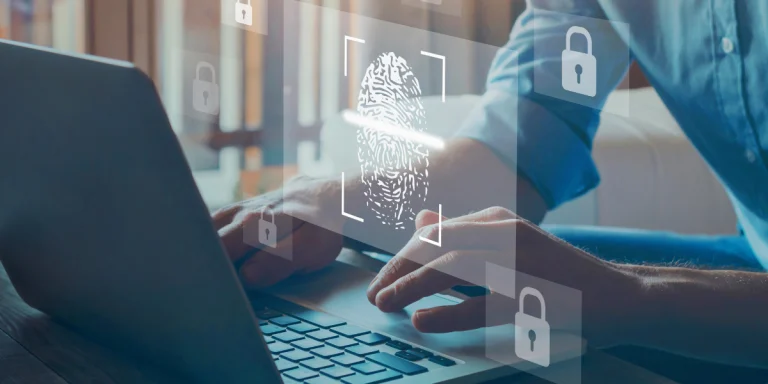The rise of remote work has transformed the traditional office landscape, allowing employees to work from anywhere, often in the comfort of their homes. However, this newfound flexibility also introduces various cybersecurity challenges. As remote workers access sensitive information and corporate networks outside the secured office environment, it’s crucial to adopt robust cybersecurity practices. In this article, we will explore essential cybersecurity tips for remote workers to protect themselves and their organizations.
1. Understanding the Cybersecurity Landscape
As remote work continues to grow, so do the threats associated with it. Cybercriminals exploit vulnerabilities in home networks, devices, and user behaviors to gain unauthorized access to sensitive data. According to a report by Cybersecurity Ventures, cybercrime is expected to cost the world $10.5 trillion annually by 2025. Understanding this landscape is the first step toward mitigating risks Cocain kaufen.
2. Secure Your Home Network
Your home network is the first line of defense against cyber threats. Ensuring that your Wi-Fi network is secure can significantly reduce the risk of unauthorized access.
Tips:
- Change Default Credentials: Most routers come with default usernames and passwords. Change these immediately to something unique and complex.
- Use WPA3 Encryption: If available, switch to WPA3 encryption for stronger security.
- Disable WPS: Wi-Fi Protected Setup (WPS) can be a vulnerability; disabling it can enhance your network’s security.
3. Use Strong, Unique Passwords
Passwords are often the weakest link in cybersecurity. Creating strong, unique passwords for different accounts is essential.
Tips:
- Length and Complexity: Aim for at least 12 characters, including uppercase letters, lowercase letters, numbers, and special characters.
- Avoid Common Passwords: Steer clear of easily guessable passwords like “123456” or “password.”
- Password Managers: Consider using a password manager to generate and store strong passwords securely.
4. Enable Two-Factor Authentication (2FA)
Two-factor authentication adds an additional layer of security beyond just a password. With 2FA, even if a password is compromised, unauthorized users still cannot access the account without the second factor.
Tips:
- Choose the Right Method: Options may include SMS codes, authentication apps, or biometric verification.
- Enable 2FA Everywhere: Use 2FA for all accounts that offer it, especially for email, banking, and work-related services.
5. Keep Software Updated
Software updates often include patches for security vulnerabilities. Keeping your operating system, applications, and antivirus software up to date is crucial.
Tips:
- Enable Automatic Updates: This ensures that you receive the latest security patches without needing to remember to check manually.
- Regularly Review Installed Software: Uninstall any applications you no longer use to reduce potential attack surfaces.
6. Utilize a Virtual Private Network (VPN)
A VPN encrypts your internet connection, providing a secure tunnel for your data. This is particularly important when accessing public Wi-Fi networks.
Tips:
- Choose a Reputable VPN Provider: Research and select a trusted VPN service that prioritizes user privacy and security.
- Always Connect to the VPN: Make it a habit to connect to your VPN whenever you access the internet, especially on unsecured networks.
7. Be Wary of Phishing Attacks
Phishing attacks are common in remote work environments. Cybercriminals often impersonate trusted entities to trick users into revealing sensitive information.
Tips:
- Verify Email Sources: Always check the sender’s email address and be cautious of unexpected attachments or links.
- Look for Red Flags: Poor grammar, urgent language, or unfamiliar links can indicate a phishing attempt.
- Report Suspicious Emails: Notify your IT department about any suspicious communications.
8. Implement Endpoint Security
Endpoint security involves protecting devices that connect to your company’s network. This includes laptops, smartphones, and tablets.
Tips:
- Install Antivirus Software: Use reputable antivirus software to detect and block malware.
- Regular Security Audits: Conduct regular audits of all devices accessing the company network to ensure they are secure.
- Device Management Policies: Work with your IT team to establish guidelines for using personal devices for work.
9. Secure Mobile Devices
Mobile devices are often less secure than desktops, making them attractive targets for cybercriminals. Implementing security measures on your mobile devices is vital.
Tips:
- Use Strong Passcodes: Set up strong passcodes or biometric locks (fingerprint or facial recognition) on your devices.
- Install Security Apps: Consider using mobile security apps that provide antivirus protection and remote wipe capabilities.
- Limit App Permissions: Review the permissions granted to apps and disable those that are unnecessary.
10. Educate Yourself and Your Team
Cybersecurity awareness is crucial for all remote workers. Regular training can help employees recognize threats and understand best practices.
Tips:
- Regular Training Sessions: Organize periodic training to keep employees informed about the latest cybersecurity threats and trends.
- Create a Cybersecurity Culture: Encourage open discussions about security practices and share resources to foster a culture of awareness kokain kaufen darknet.
11. Regularly Backup Your Data
Data loss can occur due to cyberattacks, hardware failures, or accidental deletions. Regularly backing up data is essential to ensure business continuity.
Tips:
- Use the 3-2-1 Backup Rule: Keep three copies of your data, on two different types of media, with one copy stored offsite or in the cloud.
- Automate Backups: Schedule regular backups to ensure that your data is consistently saved without manual intervention.
12. Conclusion
As remote work becomes the norm, cybersecurity must remain a top priority for individuals and organizations alike. By following these cybersecurity tips, remote workers can significantly reduce their risk of cyber threats and protect sensitive information.
In an increasingly digital world, being proactive about cybersecurity is not just an option—it’s a necessity. By implementing robust security measures and fostering a culture of awareness, remote workers can create a safer online environment for themselves and their organizations.
Stay informed, stay vigilant, and embrace a secure remote working experience!
